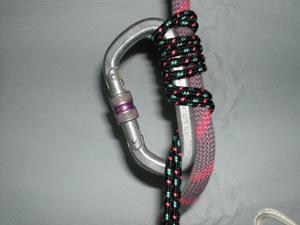Help with making sense of an interview I am translating ( Barnett system)
|
|
I am translating a text. Between the person's slang and my lack of climbing knowledge I am not sure this will make any sense. If you have valuable criticism and knowledge the Barnett System please feel free to shine some light. |
|
|
Yeah, the "eased by spinning sheath" makes no sense. |
|
|
Hexcentric instead of "excentric." |
|
|
Could you provide the original text for the passage in question? I assume you are translating from French. |
|
|
Thanks, this helps a lot. |
|
|
Tim Watts wrote: Original text: ...confectionné avec un brin de corde 9mm assoupli par "repoussage" de gaine et qui était relié à la corde par un machard sur mousqueton.I'd translate this as "Made up with a length of 9mm cord, made supple by compressing the sheath, and which was fastened to the (climbing) rope with a marchard sur mousqueton," i.e. In the US, the Machard knot is usually called an autoblock. It was invented by the French Calanques climber Serge Marchard in 1961 (when he was 16 years old). See for example youtube.com/watch?v=oJgDCkc… The Machard sur mousqueton is often called the Bachmann knot in the US, see for example netknots.com/rope_knots/bac…. I translated "repoussage" de gaine as "compressing the sheath," meaning that after cutting the cord, the sheath was compressed along the length of the rope and the extra exposed core cut away. This left a piece in which the sheath is slightly longer than the core, which would make the cord more flexible, a requirement for the Bartlett system to work. |
|
|
Sweet! Thanks for the photo too! |
|
|
Interesting . . . thanks for the video too. I did not know about Machard. My friends use it as a general term to describe a Prusik knot but it never occurred to me to ask why it was called a "Machard". Merci! |
|
|
rgold wrote:The Machard sur mousqueton is often called the Bachmann knot in the US, see for example netknots.com/rope_knots/bac….Umm, are you sure of that? I'll admit I'd never heard of a Machard knot until now but from the video clip you posted it doesn't look like a Bachmann knot. According to animatedknots.com/klemheist/ a Machard knot (without carabiner) is the same as a Klemheist, and a Machard with carabiner is the same as an autoblock. |
|
|
Martin le Roux wrote: Umm, are you sure of that? I'll admit I'd never heard of a Machard knot until now but from the video clip you posted it doesn't look like a Bachmann knot. According to animatedknots.com/klemheist/ a Machard knot (without carabiner) is the same as a Klemheist, and a Machard with carabiner is the same as an autoblock.I'm pretty sure. The clip I posted is for the Machard knot. Although it is sometimes confused with the Kleimheist, it is not a Kleimheist. The Marchard sur mousqueton ("Machard on a carabiner") is a different knot than the Machard, so it doesn't look like the Machard, as you have noted. I think the French have taken Machard as a generic term for a friction hitch and used appended it the carabiner wrap version, which is the Bachmann knot. The Bachmann knot was invented by Franz Bachmann at least ten years before the Machard. |
|
|
rgold wrote: Original text: ...confectionné avec un brin de corde 9mm assoupli par "repoussage" de gaine et qui était relié à la corde par un machard sur mousqueton. I'd translate this as "Made up with a length of 9mm cord, made supple by compressing the sheath, and which was fastened to the (climbing) rope with a marchard sur mousqueton," i.e. Hi everyone, if Marchard is the surname of the inventor, why his knot is named Machard? what is wrong here, is his surname or the name of the knot? Or is by purpose to make the pronouciation easier? I also saw Marchant... |

 Continue with onX Maps
Continue with onX Maps Continue with Facebook
Continue with Facebook




















